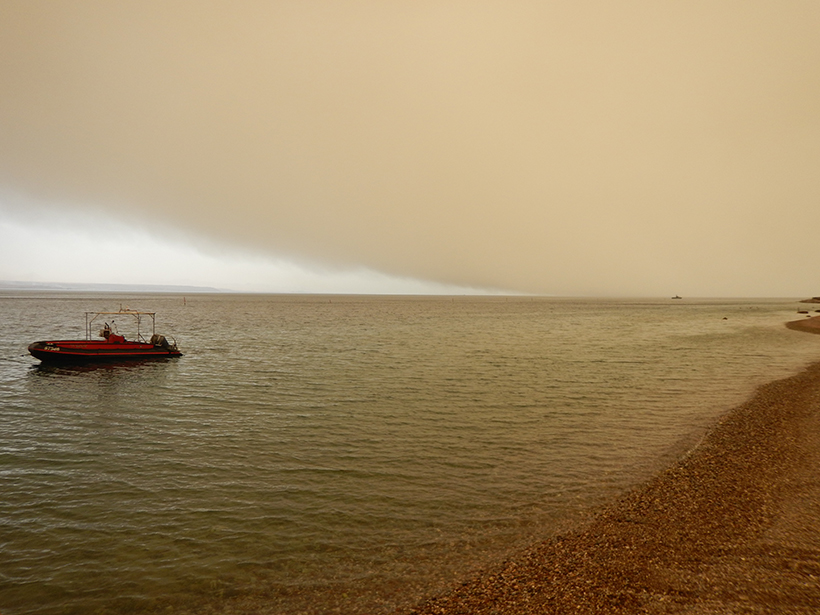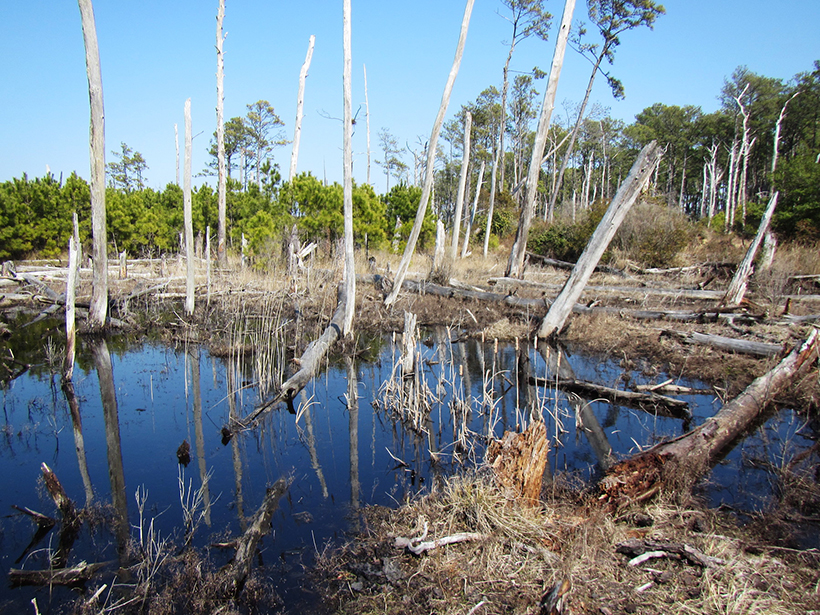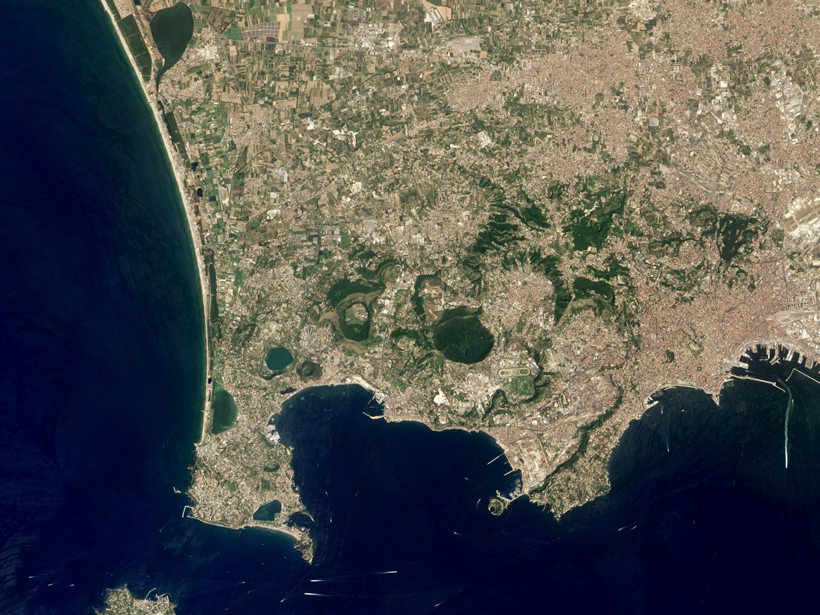New research shows that solar radiation levels are growing 10% faster than previously believed and that the radiation environment in space will worsen with time.
Research Spotlights
Research spotlights are plain-language summaries of recent articles published in AGU’s suite of 24 journals.
How to Build a Better Light Trap
Nanosized chambers capture bits of light for infinite amounts of time.
Dust Does Not Control Surface Ocean Productivity
The first continuous comparisons between daily atmospheric dust and ocean productivity measurements indicate that they are not correlated in the Gulf of Aqaba’s nutrient-limited ecosystem.
Impact of Hurricanes and Nor’easters on Coastal Forests
Scientists trace severe storms’ effects through tree ring growth patterns.
Visualizing One of the Most Hazardous Formations in Nature
A network of buoys provides a first glimpse of the seafloor beneath a volatile Italian caldera.
The Upside to a “Bad” Ozone Precursor
In Sweden’s wet heathland, scientists see how a sensitive ecosystem adapts to rising global temperatures.
Evidence for Gravity Tectonics After the Great Sumatra Quake
A new method that applies structural geology principles to aftershock analyses suggests that gravity-driven motion may occur during part of the seismic cycle.
What Causes Flash Floods in the Middle East?
Researchers zero in on the large-scale meteorological processes driving extreme precipitation events in the hot, arid desert region.
Major Uncertainty in Estimates of Carbon Trapped in Soil
A new study reveals discrepancies between global databases and field measurements.
A Deeper Understanding of Carbon Decomposition in Arctic Soils
Physical parameters may help scientists extrapolate Arctic carbon soil losses from the local to the regional scale, according to the results of a yearlong incubation experiment.







